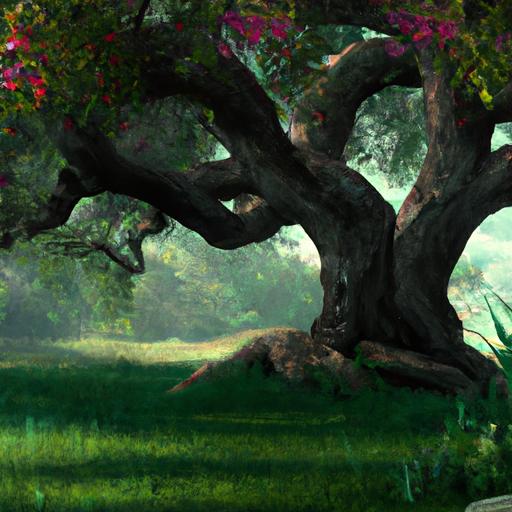Ash trees are beautiful additions to any landscape, and if you’re considering adding one to yours, you may have heard that they are late bloomers.
But, are ash trees really late bloomers? To answer this question, let’s dive into the facts surrounding these trees.
We’ll learn about what ash trees are, their characteristics, why they are a good choice, and the late bloomer nature of ash trees.
We’ll also look at the benefits and potential problems with late blooming ash trees, as well as tips for maintaining them.
So, let’s get started to learn more about ash trees and why they may be the perfect addition to your landscape.
Table of Contents
Short Answer
Yes, ash trees are late bloomers.
They usually bloom in late spring or early summer, after other trees have already bloomed.
Ash trees are also wind pollinated, so they typically release their pollen before other trees.
Additionally, ash trees can have a long flowering period, sometimes continuing until mid-summer.
What are Ash Trees?
Ash trees (Fraxinus species) are deciduous trees that can be found in many parts of the world.
They are known for their vibrant fall foliage and are popularly planted in parks and gardens because of their fast growth rate and long life expectancy.
Ash trees can grow to be quite large, reaching heights of up to 70 feet and a spread of 40 feet.
Their leaves are compound and alternately arranged on the branches.
The leaves are typically a deep green in color and turn to vibrant shades of yellow, orange, and red in the autumn.
The flowers of ash trees are fragrant and have a distinctively bright yellow hue.
These flowers bloom in late spring and early summer, usually between April and June.
The flowers are often followed by small, winged fruits called samaras.
These samaras are typically a dark reddish-brown color and can be found on the ground beneath the tree in the fall.
Ash trees are also known for their hardwood, which is used for furniture, cabinetry, flooring, and other items.
The wood is strong and durable, making it a popular choice for woodworking projects.
Ash trees are also valued for their shade and can provide a cool haven during hot summer days.
Characteristics of Ash Trees

Ash trees (Fraxinus species) are deciduous trees that are known for their vibrant fall foliage, making them a popular choice for landscaping.
They typically range in height from 10 to 60 feet, with a spread of up to 40 feet.
Their leaves are typically compound, with 7 to 11 leaflets, and are bright green in the spring and summer, fading to yellow and orange in the fall.
They have a distinctive bark, which is a gray-brown color and has a pattern of shallow ridges and furrows.
Ash trees are also late bloomers, flowering in late spring to early summer.
Their flowers are small and fragrant, and have a distinctively bright yellow hue.
The blooms generally appear in clusters and are followed by small, winged fruits that are green when immature and turn brown when mature.
Ash trees have a fast growth rate and can reach maturity in as little as 10 years.
They also have a long life expectancy, with some trees living for hundreds of years.
This makes them an ideal choice for parks and gardens, where they can provide shade and beauty for many years to come.
Unfortunately, ash trees are susceptible to several pests and diseases, so they should be monitored regularly for signs of infestation.
Common pests include the ash borer, emerald ash borer, and twig girdler, all of which can cause damage to the tree if left unchecked.
Common diseases include anthracnose, leaf spot, and powdery mildew, all of which can weaken the tree and reduce its lifespan.
Why Ash Trees are a Good Choice
When it comes to choosing trees for your landscape, ash trees (Fraxinus species) are often a top choice.
Their fast growth rate and long life expectancy make them an ideal choice for parks and gardens.
They are also known for their vibrant fall foliage and fragrant, bright yellow flowers that bloom in late spring to early summer.
These flowers have a distinct and beautiful hue, making ash trees a stunning addition to any landscape.
In addition to their beauty, ash trees are also incredibly hardy.
They can withstand a range of temperatures and soil conditions, making them a versatile choice for any climate.
They are also relatively easy to maintain, requiring minimal pruning and fertilization.
Additionally, ash trees are resistant to many common pests and diseases, so they require less monitoring and care than other types of trees.
For these reasons, ash trees are a popular choice for gardeners and landscapers alike.
They are a great way to add color and vibrancy to any landscape, while also providing a long-lasting and low-maintenance addition to the area.
However, while ash trees are generally a good choice, it is important to be aware of the potential for pests and disease, and to regularly inspect your trees for signs of infestation.
The Late Bloomer Nature of Ash Trees

When it comes to the bloom timing of ash trees, they are indeed late bloomers.
The blossoms of ash trees typically emerge in late spring or early summer, which is long after other trees have already bloomed.
Their flowers are fragrant and have a bright yellow hue, making them an attractive addition to any landscape.
This late blooming period gives ash trees the advantage of being able to withstand the cold winter temperatures and still produce flowers in the spring.
The flowers of ash trees are unique in that they can be pollinated by both insects and wind.
This means that the trees dont have to rely solely on the presence of pollinators for reproduction.
This also gives them a better chance of surviving in colder climates, where pollinating insects may be scarce.
In addition to being late bloomers, ash trees are also fast growers.
They can reach heights of up to 50 feet, and they usually have a life expectancy of around 25 years.
This makes them an ideal choice for parks and gardens, as they can provide a lot of shade in a relatively short period of time.
Unfortunately, ash trees are also susceptible to several pests and diseases.
It is important to monitor them regularly for signs of infestation, as this can drastically reduce their lifespan.
For this reason, it is important to consult with a local arborist if you are considering planting an ash tree in your landscape.
The Benefits of Ash Trees Blooming Late
Ash trees may be late bloomers, but they offer a number of benefits to gardeners and landscapers alike.
For one, their flowers provide a unique and beautiful addition to any landscape.
Their bright yellow hue is sure to draw attention and make any outdoor space look brighter and more vibrant.
In addition, they can add a touch of natural beauty to parks and gardens.
Not only are ash trees aesthetically pleasing, but they also have a fast growth rate and long life expectancy.
This means that they can provide a long-term solution for any outdoor space.
Plus, theyre relatively hardy and can withstand several pests and diseases.
In other words, theyre an ideal choice for anyone looking for a reliable and attractive tree.
Finally, ash trees late blooming period helps to extend the blooming season of other trees.
By flowering later in the spring and into the summer, ash trees can add an extra layer of floral beauty to any garden.
In fact, ash trees are often planted near other trees to create a continuous display of flowers throughout the season.
Potential Problems with Late Blooming Ash Trees

When it comes to ash trees, it is important to be aware of potential problems that can arise from late blooming.
Ash trees are prone to several pests and diseases, such as the emerald ash borer, ash yellows, and powdery mildew.
All of these can cause damage to the tree and its foliage, and in some cases, the damage can be fatal.
Additionally, ash trees are sensitive to environmental changes, such as drought or extreme temperatures.
If the tree is not given enough water or exposed to extreme temperatures, it can suffer from leaf loss and dieback, which can significantly reduce the lifespan of the tree.
It is also important to note that ash trees are susceptible to wind damage.
If the tree is planted in an area that is exposed to strong winds, it can cause damage to the trunk and branches.
Finally, ash trees are vulnerable to root rot, which can occur if the soil is too wet or if the tree is over-watered.
To prevent root rot, it is important to ensure that the soil is properly drained and that the tree is not over-watered.
Tips for Maintaining Ash Trees
Maintaining ash trees in your yard or landscape can be a rewarding experience, as they provide a diversity of benefits for your property. Ash trees are fast-growing and are known for their bright yellow flowers and vibrant fall foliage, making them an ideal addition to any landscape. However, ash trees are also susceptible to pests and diseases, so regular monitoring and maintenance are needed to keep them healthy. Here are some tips for taking care of an ash tree:
Prune your ash tree regularly.
Pruning is important because it helps to keep ash trees healthy and growing strong.
Proper pruning involves removing dead and diseased branches, as well as any branches that are growing in a direction that could damage your home or property.
Monitor your ash tree for signs of pests and diseases.
Ash trees are susceptible to a variety of pests and diseases, including ash borer, ash whitefly, and ash leaf spot.
If you notice any signs of infestation, contact a certified arborist to have the problem treated as soon as possible.
Provide your ash tree with adequate water.
Ash trees need a steady supply of water, especially during periods of drought.
If your tree is showing signs of stress due to lack of water, provide supplemental irrigation to help keep it healthy.
Fertilize your ash tree.
Fertilizing your ash tree can help to boost its growth and promote healthy foliage.
However, its important to choose the right fertilizer for your particular tree.
Consult a certified arborist to find out which type of fertilizer is best for your ash tree.
By following these tips, you can help ensure that your ash tree remains healthy and vibrant for years to come.
With a little bit of regular care and attention, your ash tree can provide you with years of beauty and enjoyment.
Final Thoughts
Ash trees are a beautiful and versatile addition to any landscape, with their vibrant fall foliage and fragrant late-blooming yellow flowers.
While they are a great choice for gardens and parks, their late blooming nature can lead to issues with pests and diseases.
To ensure your ash trees remain healthy and vibrant, regular maintenance is key.
With the right care, ash trees can be a great long-term investment that will provide beauty and life to your outdoor spaces for years to come.


